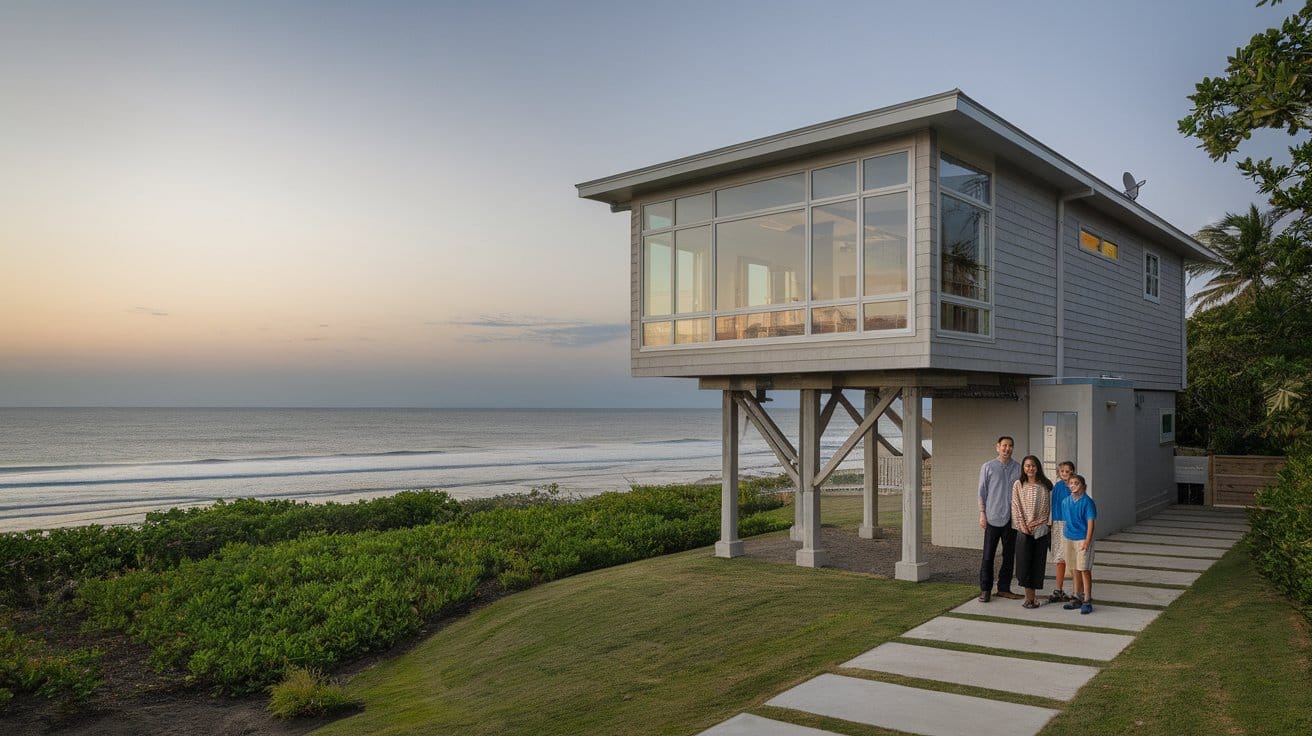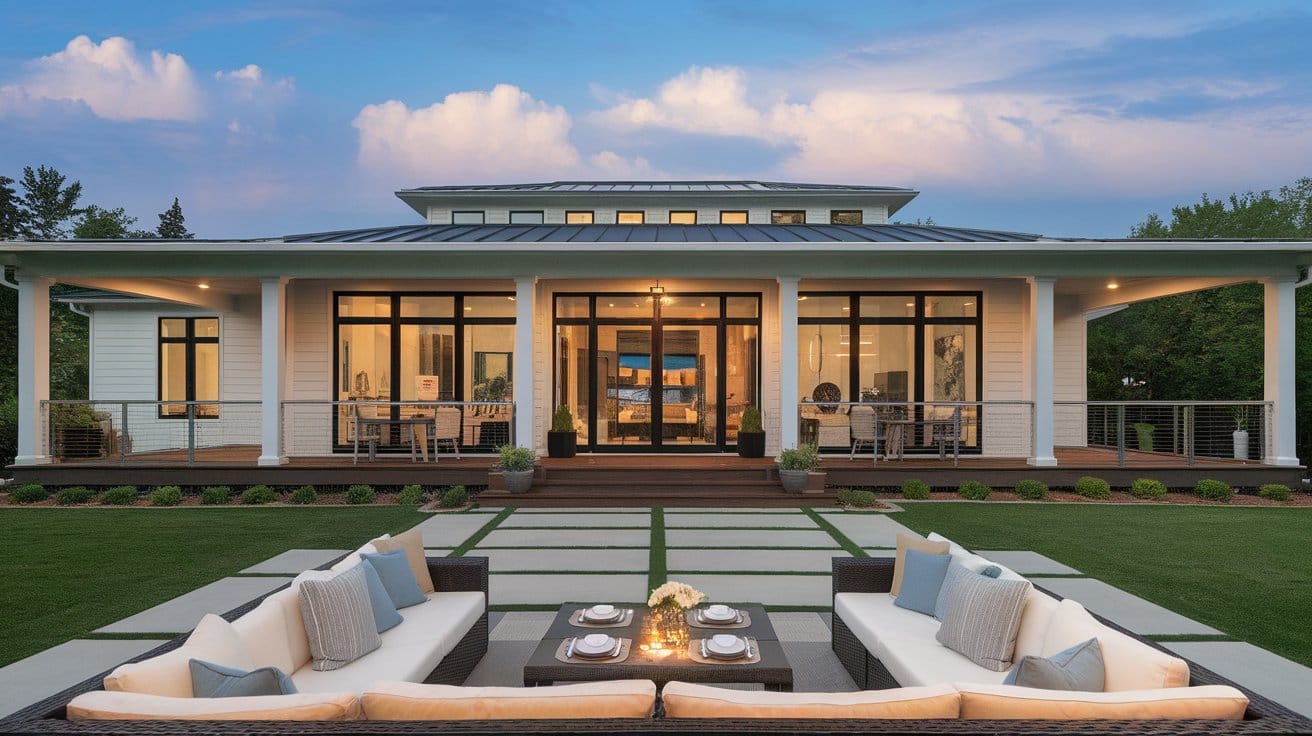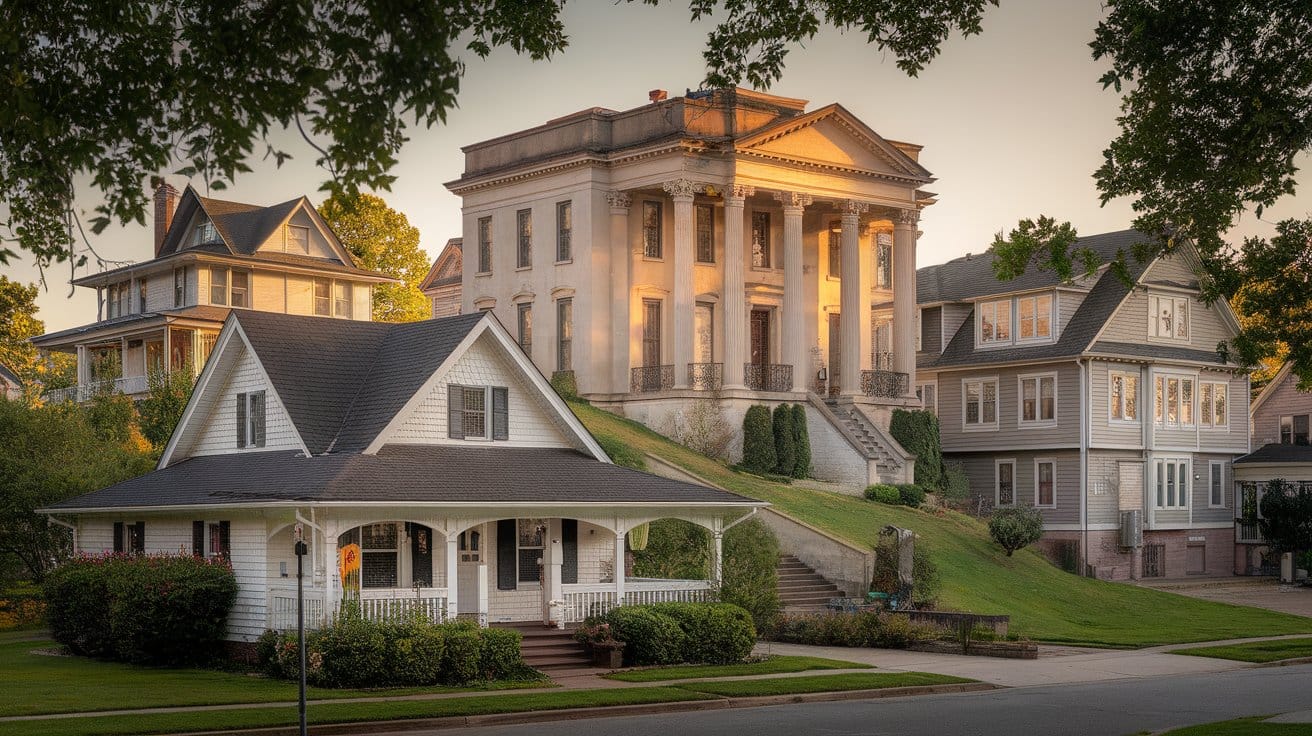Introduction
Triangular house designs have become a standout trend in modern architecture, offering a unique blend of aesthetics and functionality. These homes utilize their triangular shapes not just for visual appeal but to optimize every inch of available space. With their sharp angles and compact layouts, these homes are designed to maximize efficiency without sacrificing comfort. Architects have embraced this style, incorporating sustainable materials and innovative solutions to overcome the challenges posed by the unusual shape.
Whether in urban settings or as part of the tiny house movement, triangular houses offer a refreshing alternative to traditional homes. Their ability to blend form and function makes them a perfect solution for those seeking to live minimally while enjoying a modern, stylish environment. As more residential projects adopt this trend, triangular houses continue to redefine the boundaries of house design.
Key Takeaways
- Triangular house designs blend aesthetics and functionality, making them a standout trend in modern architecture.
- The triangular shape offers an efficient use of space, perfect for compact and tiny house living.
- Architects utilize sustainable materials and innovative structural solutions to overcome the challenges of the unique form.
- Triangle house designs promote both eco-conscious living and creative architectural solutions.
- These homes showcase how triangular shapes can redefine modern residential layouts and living environments.
- The flexibility of triangular houses allows for adaptable interiors that maximize both space and comfort.
Design Features of the Triangular Tiny House

The triangular tiny house offers a unique take on modern architecture by blending geometric shapes with functional design. This triangle house design captures attention with its sharp angles, roof angles, and efficient use of space. Architects focus on both interior and exterior elements, ensuring that the layout maximizes every inch of the limited footprint. Inside, the living room and bedroom are designed with functionality in mind, while the wooden structure adds to the house’s overall charm. With a well-thought-out entrance and clever ceiling design, this triangle house maintains privacy while offering outdoor access through a carefully placed dining area. The triangular shape of this house not only provides a visually striking form but also contributes to a more efficient use of space, making it an ideal choice for those looking for compact and functional housing solutions.
Triangular Design Aesthetics
The triangular house stands out due to its bold geometric design. Its sharp, angular exterior offers a fresh take on traditional house design, emphasizing both form and function. The triangular shape is not just an aesthetic choice; it allows for innovative use of space inside the house, creating opportunities for more efficient layouts. The structure’s compact size doesn’t compromise on style, as the architects have carefully designed each element to enhance the visual appeal while ensuring that the interior feels open and functional.
Efficient Use of Interior Space
Inside the triangular house, every square foot counts. Architects have optimized the layout to ensure maximum use of the available space, allowing for both a living area and a cozy kitchen. The house also features multi-functional rooms that can easily transition between living spaces and work spaces. This clever utilization of space makes the home feel larger than it is, offering an ideal balance between functionality and comfort.
Innovative Ways to Maximize Space in a Triangular House
1. Built-in Storage Solutions
In a triangular house, built-in storage is key to making the most of the limited space. Custom shelving and hidden compartments help keep the interior functional without cluttering the living area.
2. Multi-functional Furniture
Furniture that serves more than one purpose is essential in a triangle house design. For example, a fold-out table or a sofa that converts into a bed optimizes both seating and sleeping areas without sacrificing space.
3. Vertical Space Utilization
With limited floor space, vertical elements like shelving, hanging storage, and tall cabinets help maximize the available area, offering more storage options while keeping the floor plan open and functional.
4. Open Floor Plans
Open floor layouts are a common feature in triangular houses, allowing for more flexibility in arranging rooms and ensuring the space feels larger and more connected.
5. Natural Light Optimization
Maximizing natural light with strategically placed windows enhances the sense of openness and makes the interior feel more spacious and inviting in a triangle house.
Exploring Groundbreaking Architectural Concepts in Tiny Housing

When discussing architectural innovations in tiny housing, the triangle house offers a fresh perspective. Its triangular form not only enhances aesthetics but also pushes the boundaries of conventional house design. Tiny house enthusiasts and architects alike appreciate how this design incorporates eco-friendly materials and energy-efficient technologies, reducing the building’s footprint while promoting sustainable living. The unusual shape poses both challenges and opportunities, resulting in a residence that balances form and function.
Sustainable Building Materials
A key aspect of the triangle house design is its commitment to sustainability. By incorporating eco-friendly materials like timber and recycled elements, the architects minimize the house’s footprint while maintaining structural integrity. The building is also designed to be energy-efficient, reducing overall environmental impact. This approach not only contributes to greener living but also demonstrates how tiny house designs can lead the way in sustainable architecture.
Innovative Structural Solutions
The triangle house presents unique structural challenges due to its triangular shape. Architects must address issues such as stability and insulation within the unusual form. By using custom structural techniques like reinforced concrete and steel reinforcements, they create a residence that is both durable and visually striking. These innovative solutions allow the design to stand out while ensuring the house remains practical and functional for modern living.
Case Study: Sustainable Triangular Tiny House by BIG Architects
BIG Architects designed an innovative triangle house in Copenhagen that exemplifies the perfect blend of sustainable materials and modern architectural design. This triangular house incorporates eco-friendly features, including solar panels, reclaimed wood, and a rainwater collection system, which significantly reduces its environmental impact. The compact house design also prioritizes energy efficiency, with insulated walls and triple-glazed windows that help maintain a stable indoor climate while minimizing energy consumption.
The triangular shape of the house posed unique challenges for architects, particularly in ensuring structural stability and maximizing the use of space. However, through creative solutions, such as custom-built furniture and multi-functional rooms, they managed to transform the compact layout into a highly functional and comfortable living environment. This triangle house showcases how sustainable architectural innovation can meet modern housing demands without sacrificing comfort or style.
Tiny House Designs Inspired by Triangular Shapes

Triangular shapes have become a central feature in modern tiny house design. Architects are now rethinking how space is used, and the triangle house design embodies these new ideas. These homes often leverage their sharp angles and distinctive architectural features to create open and functional living spaces. By incorporating triangular shapes, these residences feel both modern and efficient, offering stylish yet compact options for urban living.
Creative Floorplans for Small Spaces
The triangular house design lends itself to creative floorplans that optimize every inch of the available space. Architects have found ways to incorporate open living areas, small but functional kitchens, and multi-use rooms into the triangular layout. This design is perfect for individuals who appreciate minimalism and want to live efficiently without sacrificing comfort.
Modern Architectural Trends in Triangular Tiny Houses
Modern architectural trends have embraced the triangle house as a way to challenge traditional concepts of space and design. Triangular shapes are being used more frequently to create dynamic, functional living environments that feel both modern and efficient. These trends also highlight how architects are pushing the boundaries of conventional house design, experimenting with geometry and space utilization to create innovative and visually striking homes.
“Good design is not just what looks good. It also needs to perform, convert, astonish, and fulfill its purpose.” – David Airey
Utilizing Small Spaces Creatively in Triangle House Design

The triangle house proves that small spaces can be both functional and creative. This house design maximizes the potential of every corner, transforming limited space into a highly efficient living environment. The triangular shape offers opportunities to integrate features like custom storage, clever kitchen layouts, and multi-use rooms. Architects and homeowners alike appreciate how this design utilizes every square foot while maintaining a minimalist and modern aesthetic.
Maximizing Storage in Triangular Spaces
In the triangular house, clever storage solutions are essential to maximize the limited space. Architects incorporate built-in shelving, hidden compartments, and multi-functional furniture to ensure every inch is used efficiently. This allows the interior to remain uncluttered and functional, while still offering ample storage for residents.
Flexible Room Layouts in Triangular Houses
The triangle house design allows for flexible room layouts, making it easier to adapt the space to different needs. Architects have created multi-use rooms that can function as living areas, work spaces, or even guest rooms when needed. This flexibility is particularly important in tiny homes, where every square foot must be carefully planned to maximize both functionality and comfort.
Conclusion
The triangle house design proves that modern house design can be both innovative and practical. By utilizing the triangular shape, architects can create homes that maximize space while maintaining a visually striking form. These homes push the boundaries of traditional residential layouts, allowing for a unique blend of functionality and style. With features like sustainable building materials and efficient floorplans, triangular houses are ideal for those who appreciate both form and eco-conscious living.
As more architects explore the possibilities of triangular shapes, the triangle house continues to evolve. Its ability to combine aesthetics with practicality offers an exciting glimpse into the future of tiny house and compact living designs. These homes stand as a testament to the potential of rethinking architectural norms, showcasing how creativity can lead to smarter and more efficient living spaces.

![CLOUDY BAY [6 Pack] 6inch Smart WiFi LED Recessed Lights,RGBCW Color Changing Recessed Lighting,Compatible with Alexa and Google Home Assistant,No Hub Required,15W 2700K-6500K,CRI90+ Wet Location](https://m.media-amazon.com/images/I/41H5465vC2L.jpg)




